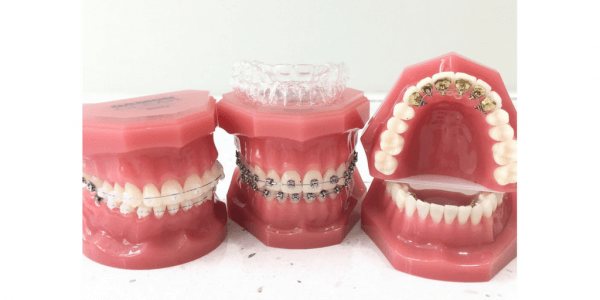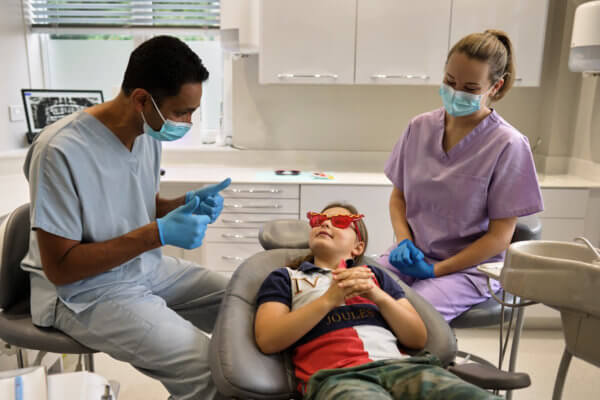In today’s World, there are more choices than ever when it comes to choosing braces for your teeth. Our orthodontist Ross McDowall explains these choices to you.

“There are four main types of braces that are available and the type you have will depend on the extent of your treatment, your personal preference, lifestyle and budget. Each type has their advantages and disadvantages, all of which will be talked through with you at your planning appointment.
Let’s look at the traditional braces first. Most of us probably think of metal bonded braces when we talk about orthodontics. Nowadays, there are two types of bonded braces available, ceramic and metal.
Ceramic Braces:
Once known as clear braces, and popular with adults, ceramic braces are clear or tooth coloured. The ceramic brackets have the advantage of being less obtrusive due to their colouring and can achieve the same tooth movements as metal braces.
Metal Braces:
Today’s metal braces are the strongest type of braces. They are far less obtrusive than they used to be and are incredibly versatile as they can be used to treat the vast majority of orthodontic problems. They are the most cost effective option and can sometimes be customised with coloured bands.

There are two alternative options available. Lingual braces still use brackets but these are placed behind the teeth and then there are clear aligners (Invisalign) which are removable and sit over the teeth. Both these options are almost invisible to the onlooker. Let’s look at them in more detail.
Lingual Braces:
These may be ideal for patients who are public facing and looking for a completely unobtrusive option. They are fixed to the inside of the teeth and work in a similar way to traditional braces, but require a little more time in the dental chair to adjust.
Invisalign:
This treatment uses a series of unique, personalised BPA-free plastic trays to gradually align your teeth. The trays should be worn for 22 hours each day and must be removed for meal times. They are more suitable for minor dental irregularities.
No matter which type of braces you and your orthodontist decide on, all braces need time to settle in, for your gums to adjust and for you to get used to them. This shouldn’t take more than a week. All braces will need regular adjustments (around every six weeks) and your teeth may feel uncomfortable due to the pressure for a couple of days after each adjustment.”
Please call us in Twyford if you would like to book an initial consultation with Ross.

